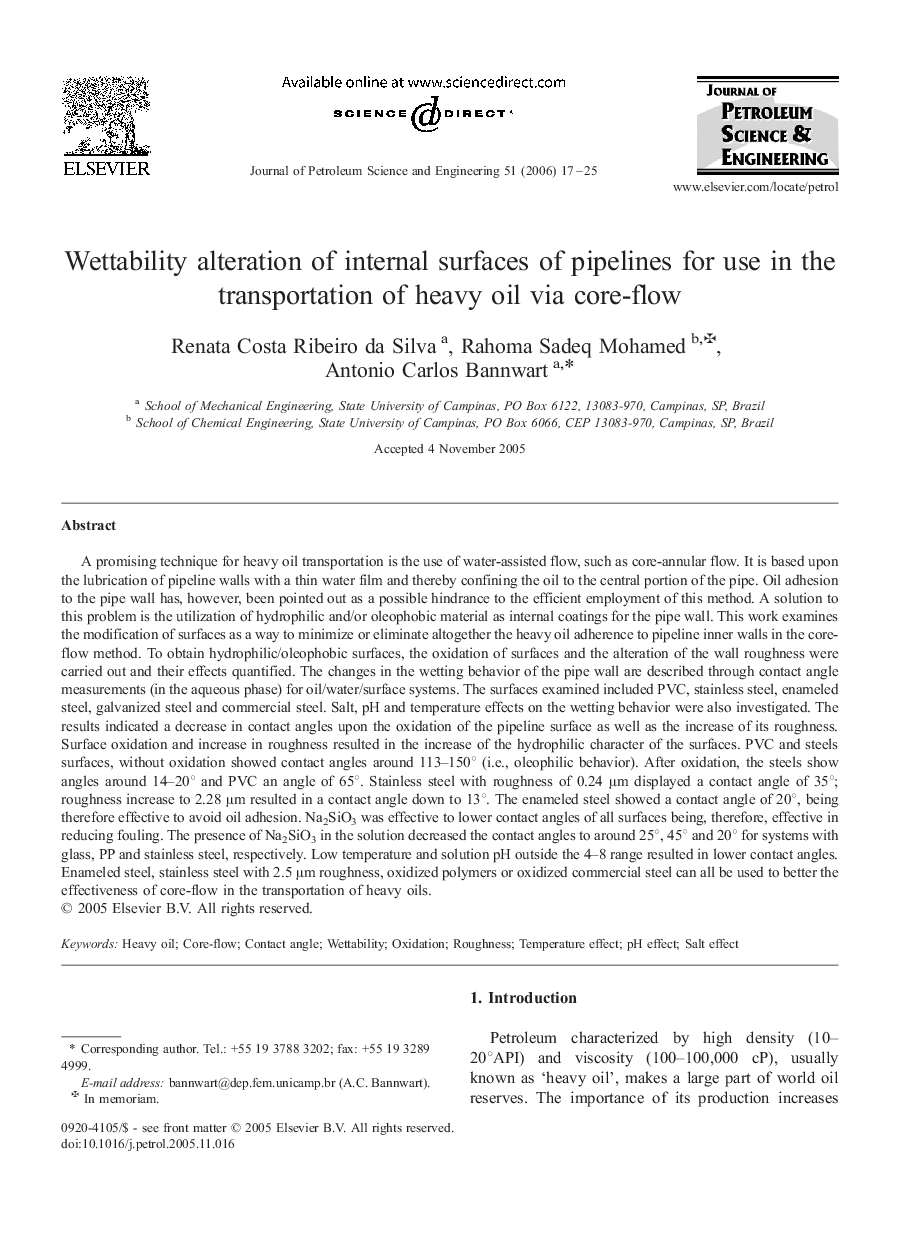| کد مقاله | کد نشریه | سال انتشار | مقاله انگلیسی | نسخه تمام متن |
|---|---|---|---|---|
| 1756492 | 1522902 | 2006 | 9 صفحه PDF | دانلود رایگان |

A promising technique for heavy oil transportation is the use of water-assisted flow, such as core-annular flow. It is based upon the lubrication of pipeline walls with a thin water film and thereby confining the oil to the central portion of the pipe. Oil adhesion to the pipe wall has, however, been pointed out as a possible hindrance to the efficient employment of this method. A solution to this problem is the utilization of hydrophilic and/or oleophobic material as internal coatings for the pipe wall. This work examines the modification of surfaces as a way to minimize or eliminate altogether the heavy oil adherence to pipeline inner walls in the core-flow method. To obtain hydrophilic/oleophobic surfaces, the oxidation of surfaces and the alteration of the wall roughness were carried out and their effects quantified. The changes in the wetting behavior of the pipe wall are described through contact angle measurements (in the aqueous phase) for oil/water/surface systems. The surfaces examined included PVC, stainless steel, enameled steel, galvanized steel and commercial steel. Salt, pH and temperature effects on the wetting behavior were also investigated. The results indicated a decrease in contact angles upon the oxidation of the pipeline surface as well as the increase of its roughness. Surface oxidation and increase in roughness resulted in the increase of the hydrophilic character of the surfaces. PVC and steels surfaces, without oxidation showed contact angles around 113–150° (i.e., oleophilic behavior). After oxidation, the steels show angles around 14–20° and PVC an angle of 65°. Stainless steel with roughness of 0.24 μm displayed a contact angle of 35°; roughness increase to 2.28 μm resulted in a contact angle down to 13°. The enameled steel showed a contact angle of 20°, being therefore effective to avoid oil adhesion. Na2SiO3 was effective to lower contact angles of all surfaces being, therefore, effective in reducing fouling. The presence of Na2SiO3 in the solution decreased the contact angles to around 25°, 45° and 20° for systems with glass, PP and stainless steel, respectively. Low temperature and solution pH outside the 4–8 range resulted in lower contact angles. Enameled steel, stainless steel with 2.5 μm roughness, oxidized polymers or oxidized commercial steel can all be used to better the effectiveness of core-flow in the transportation of heavy oils.
Journal: Journal of Petroleum Science and Engineering - Volume 51, Issues 1–2, 16 April 2006, Pages 17–25